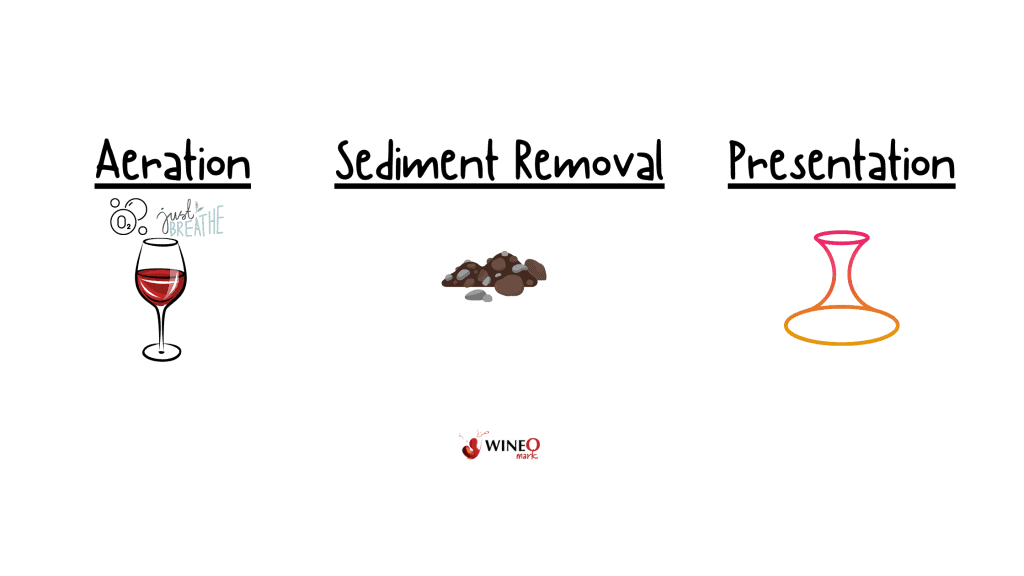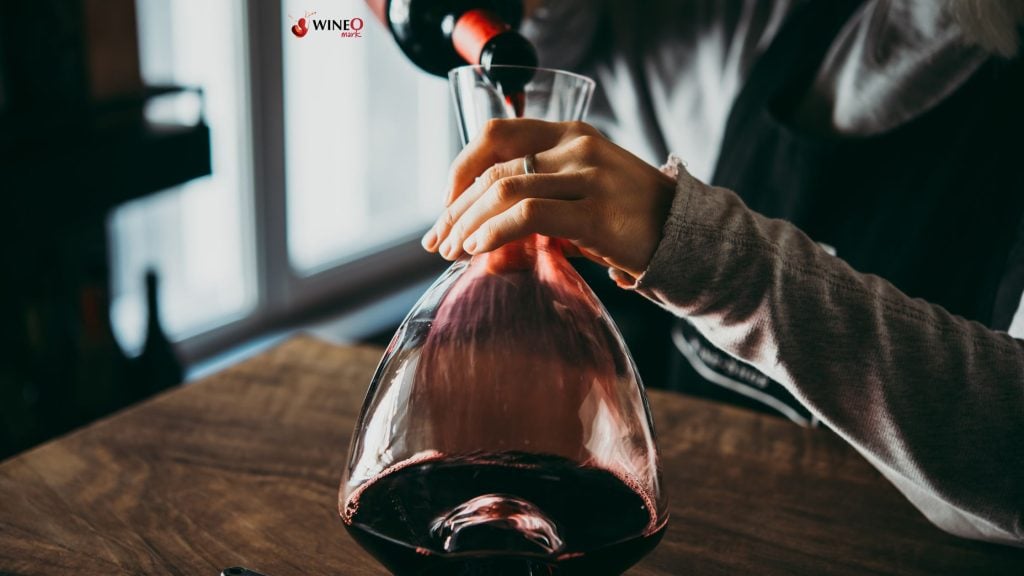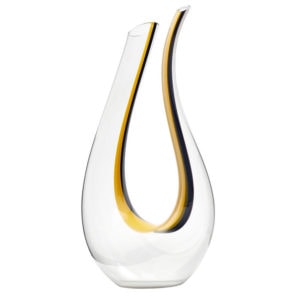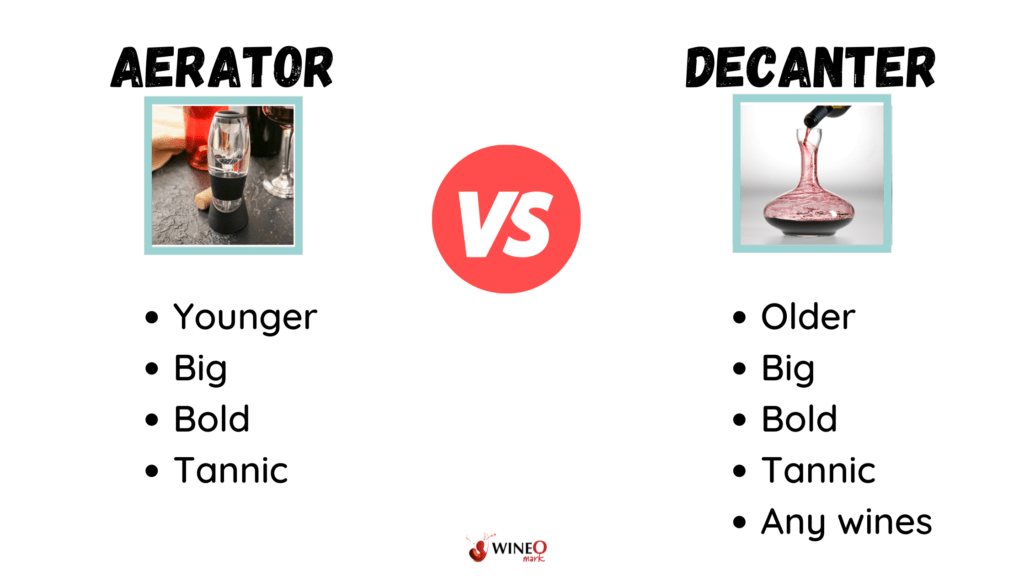
12 Best Lunch Spots In Napa
Best Lunch In Napa – Our 12 Favorite Spots! Lunch is a must when you’re out wine tasting! Whether you’re in the mood for a

Decanting wine is an age-old practice, often associated with luxury and sophistication. But what it really does is make the wine taste better!
The process involves pouring wine from its bottle into a separate container, or wine decanter, to improve the wine’s taste, aroma, and presentation.
Though it may appear daunting at first, decanting is simple once you know the steps involved. So in this article, we will explore the reasons for decanting, which wines benefit from the process, and the step-by-step method to decant like a pro.




The duration for decanting wine depends on the type, age, and individual characteristics of the wine. Here are some general guidelines to help you determine the appropriate decanting time:
Remember that these guidelines are not set in stone, as each wine is unique. Use your senses to determine the appropriate decanting time. Smell and taste the wine periodically to assess whether it has reached its peak aroma and flavor profile.
And if you’re uncertain, it’s better to err on the side of caution and decant for a shorter period, as you can always give the wine more time to breathe if needed.

If you don’t have a wine decanter, you can still decant wine using alternative methods. Here are some options to decant wine without a decanter:
These methods may not provide the same level of aeration or elegance as traditional wine decanters, but they can still help enhance the wine’s aroma and flavor profile. Remember to monitor the decanting process carefully, as over-aeration can cause the wine to lose its vitality.

However, if you don’t have a wine decanter, you can still aerate wine directly in the glass using a few alternative techniques:
While these methods can be effective in promoting aeration, they may not provide the same level of elegance, sediment removal, or aeration that a decanter or other dedicated container would offer.

Once you have decanted the wine, it is not recommended to pour it back into the bottle. Decanting is done for two main purposes: to aerate the wine and to remove sediment. Pouring the wine back into the bottle would negate the aeration benefits and could reintroduce sediment into the wine.
However, if you want to pour the wine back into the bottle after decanting just make sure to clean the bottle of all sediments first and make some its completely dry. And use a funnel to pour it back.
Decanting wine is a simple yet effective way to elevate your wine-drinking experience. By understanding the reasons for decanting and following the step-by-step guide, you can easily incorporate this age-old tradition into your wine service. So, grab a wine decanter and enjoy the improved taste and aroma that this process offers.
However, if you want to pour the wine back into the bottle after decanting just make sure to clean the bottle of all sediments first and make some its completely dry. And use a funnel to pour it back.

Best Lunch In Napa – Our 12 Favorite Spots! Lunch is a must when you’re out wine tasting! Whether you’re in the mood for a

North Coast Wine Co. Outerbound Pinot Noir – WineO Mark Review Wine Stats Grape Variety: 100% Pinot Noir Vintage: 2019 ABV: 14% Wine Region: North Coast,

Böen Pinot Noir – WineO Mark Review Wine Stats Grape Variety: 100% Pinot Noir Vintage: 2021 ABV: 14.6% Wine Region: California Flavor Profile: Cherry, raspberry, blackberry,

Merry Edwards Sauvignon Blanc – WineO Mark Review Wine Stats Grape Variety: 100% Sauvignon Blanc Vintage: 2022 ABV: 14% Wine Region: Russian River Valley, California

The Hess Collection Allomi Chardonnay – WineO Mark Review Wine Stats Grape Variety: 100% Chardonnay Vintage: 2019 ABV: 14.3% Wine Region: Napa Valley, California Flavor Profile:

Stags’ Leap Chardonnay – WineO Mark Review Wine Stats Grape Variety: 100% Chardonnay Vintage: 2022 ABV: 14.1% Wine Region: Napa Valley, California Flavor Profile: Oak, vanilla,

Godeval Cepas Vellas Godello – WineO Mark Review Wine Stats Grape Variety: 100% Godello Vintage: 2021 ABV: 13% Wine Region: Valdeorras, Spain Flavor Profile: Peach,

Félix Solís Mucho Más Tinto N.V. – WineO Mark Review Wine Stats Grape Variety: Tempranillo, Syrah Vintage: Non-Vintage ABV: 14% Wine Region: Spain Flavor Profile: Vanilla,
